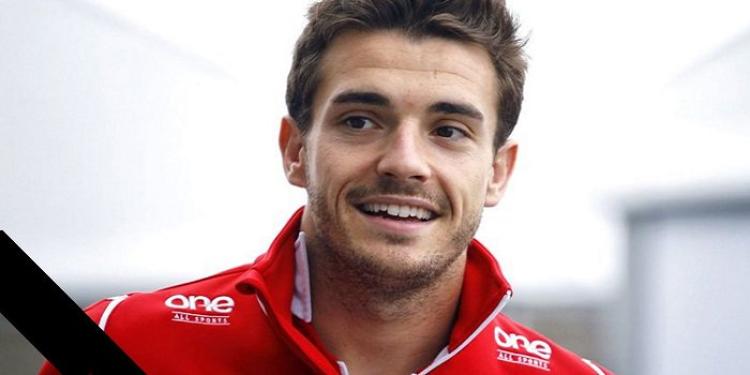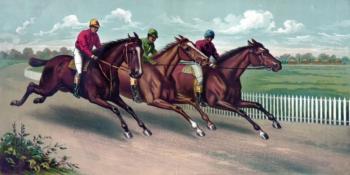Jules Bianchi’s Death: Is Formula One Safe Enough?
Posted: July 21, 2015
Updated: October 6, 2017

Formula One came a long way to become a safe series, but the heads of the drivers are still in danger.
It’s not like in the fifties and the sixties anymore, when drivers actually gambled with death. However, Formula One, and motorsport overall is still dangerous. Drivers know this, riders know this, and spectators also know this, since it stands on the back of every ticket for a motorsport event around the world: “Motorsport is dangerous”. The weekend that mobile betting news reported the Jules Bianchi death, also had some additional tragedy: riders Daniel Rivas and Bernat Martinez passed away after injuring in a Superbike race at Laguna Seca.
• Death was all around the tracks
• F1 became a safe class
• Drivers’ heads are still exposed
Auto racing will always be dangerous and motorcycle racing even more dangerous. However, many changes happened in that regard during the decades. It is no coincidence, not just good luck that no driver has died from injuries sustained in a Formula One Grand Prix since Ayrton Senna passed away in Imola in 1994 until Jules Bianchi lost the battle for his life last Friday. F1 came out of the dark ages long ago, and now it is safer than ever. However, there is always something to do, and Jules Bianchi’s death just underlined that.
When the Death lined up on the grid for every race
Back in the fifties, in the first decade of the Formula One World Championship, there was virtually no safety. Cars don’t even feature seatbelts. Drivers preferred being thrown out of the cockpit to burning inside if they are involved in an accident. This is exactly what happened to Juan Manuel Fangio, who is considered by many of those, who bet on sports in the EU, as the greatest racing driver ever.
The Argentine at 43 was title-defender in F1. He suffered a bad accident in a non-championship race in Monza in 1952. He was thrown out of his car and broke his neck. Yet, after he recovered from his injuries, he was able to come back and win four more world championship titles. But not everyone was that lucky. It wasn’t like to gamble online, it was Russian roulette. Formula One lost 11 drivers at F1 Grands Prix in the fifties.
F1 was still scary in through the 1960s and the 1970s

Though there was some development, the series was still remained extremely dangerous in the sixties. Fire-extinguishers and seatbelts appeared, but the cars became more and more powerful while becoming lighter and therefore more vulnerable at impacts. Eight drivers lost their lives at F1 Grands Prix in the 1960s, and that figure doesn’t include two-times World Champion Jim Clark, who died at a Formula 2 event at Hockenheimring in 1968.
Jim Clark was widely considered as the best driver of his generation, one of the finest drivers ever to race in Formula One. After his death, his friend, fellow Scot Jackie Stewart emerged as the most dominant driver in F1. He also became the vanguard of the Formula One safety movement, being involved in a near tragic accident in Belgium. He realized that the unprofessional environment is responsible for a lot of tragedies in the sport.
He fought for F1 safety during his racing years, and ever after. His work was essential in making tracks, cars and equipment safer. However, Formula One was still really dangerous in the seventies, when nine drivers lost their lives during an F1 World Championship event, including Austrian ace Jochen Rindt, Formula One’s only posthumous World Champion.
Jules Bianchi death: the first in more than 20 years
With safety measures evolving, Formula One became a racing series that is relatively safe, comparing to its earlier decades and other series. Two drivers died at F1 Grand Prix events in both the 1980s and the 1990s. The last of those was three-time world champion Ayrton Senna, one of the greatest racing drivers ever. He lost his life at the saddest weekend in the history of Formula One that also saw Austrian Roland Ratzenberger suffering fatal injuries in qualifying for the San Marino Grand Prix.
The deaths of Senna and Ratzenberger came as additional boosts for the safety development in Formula One. Cars and cockpits became so extremely safe that drivers now are able to climb out from the wrecks unharmed after horrifying crashes. The 2010s was the first decade in Formula One that saw no death of an F1 driver at any Grands Prix. Many of those, who bet at online sportsbooks in the EU thought that Senna would be the last one, who had to die from injuries sustained at an F1 GP. Sadly, not.

Though Formula One cars are extremely safe indeed, and they can absorb unthinkably strong impacts, the drivers’ heads are still exposed in an open-wheel racing car. Considering that, F1 was enormously lucky that no driver was fatally injured in a 20-year-long period. However, Jules Bianchi’s accident showed that there are still some territories that Formula One has to work on.
Still, it was an awfully unlucky situation. The weather limited visibility, the track was slippery and there was a recovery vehicle next to the track, without the safety car being deployed. The virtual safety car is a good and necessary feature, but Formula One has to answer additional questions. The issue of protecting the heads of the drivers was discussed in recent years, but all the solution proposals for that problem were refused. This is still a safety issue that should be sorted out, if the series want to minimize the possibility of fatal head injuries.












